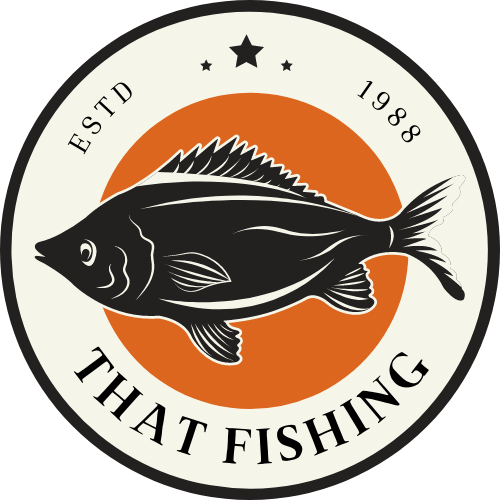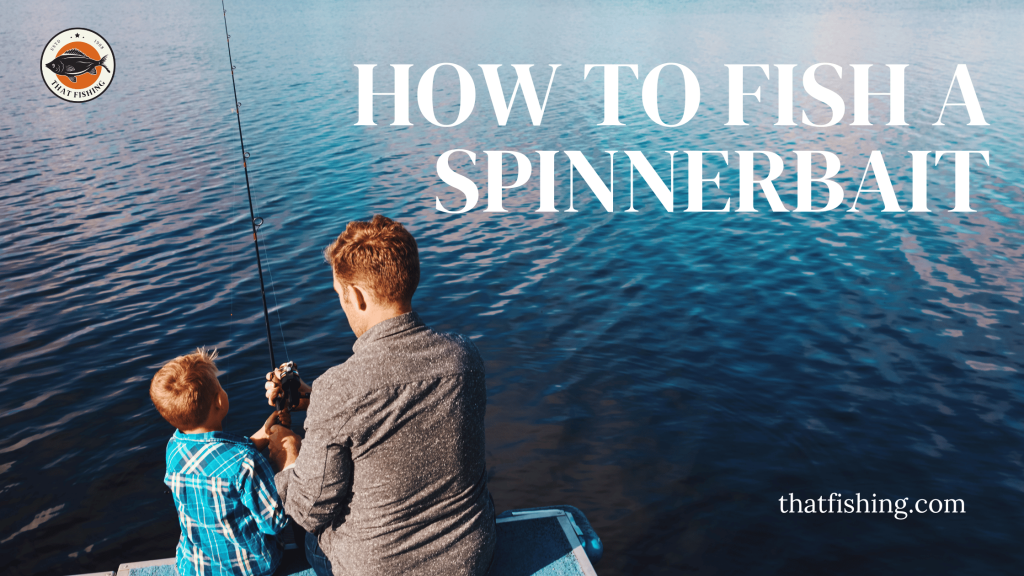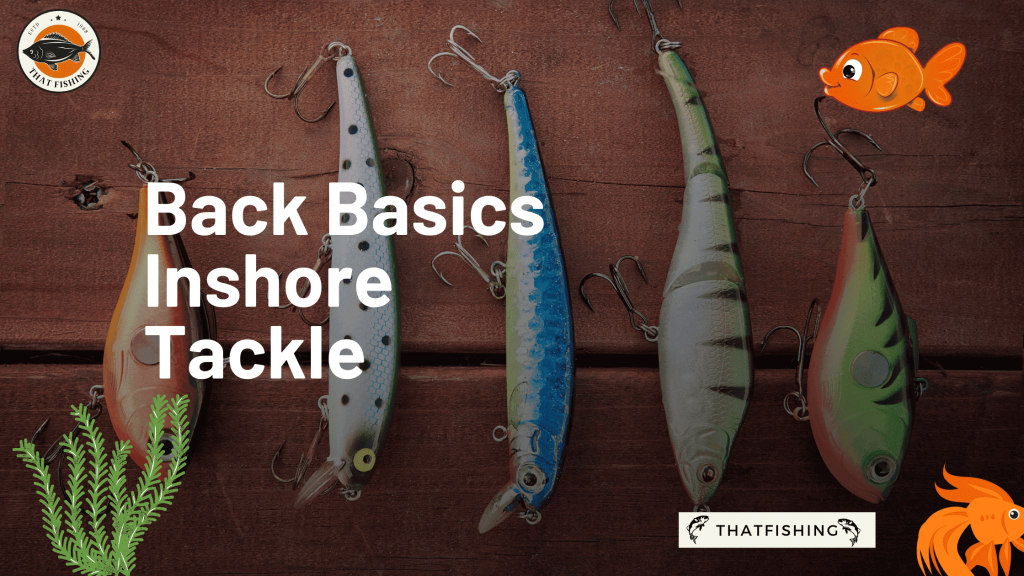Here’s another way to start strong and even up your game with a few easy fishing tips! If you are having some trouble with getting bites or are only beginning to learn the ways of an angler – then it’s time we use the quite basic but arguably one of the most natural, most reliable, and most widely used baits. Let’s learn How To Fish A Spinnerbait!
It’s a lure every angler must have in the tackle box. And a perfect lure when you’re still trying to learn how to fish. Beginners and Veterans alike always appreciate what a spinnerbait has to offer, and you’ll soon find out why.
We’ll provide some easy tips for you to quickly understand and have a go at how to fish a spinnerbait; every tip has a little info to help you out as well! Enjoy and read on, my fellow fisher friend!
Three Easy Tips On How To Fish A Spinnerbait – Summary
1: Knowing How A Spinnerbait Works
2: Use The Right Fishing Knot / Attaching To Your Line
- Palomar Knot
- Trilene Knot
3: Master The Right Cast And Retrieve
- The Right Cast
- The Solid Retrieve
Easy Tips On How To Fish A Spinnerbait
Here I have listed simple tricks and tips on how to fish a spinnerbait. Let’s go through the tips
1: Knowing How A Spinnerbait Works
It involves understanding how a spinnerbait works. Before we go ahead and cast out, we first should see to it we know at least the basics. Nothing too complicated here, just what you’ll see in a typical spinnerbait sold in the shops.
One of the reasons why spinner baits are so popular is because of their innovative design. A basic spinnerbait is mostly composed of the following parts:
- Blade – With its mechanism, vibrations are created at varying speeds (Depending on the blade used) that attract predatory fish through hearing and sensing the movement in the water. They can even be painted or colored for high visibility, adding a sense of sight to their attractiveness to fish.
- Hook – Most spinnerbaits use a single hook; this increases the chances of getting it easy and also makes it less likely to be caught up in weeds or other obstacles.
- Head – Attached to the wide arm, and is made to look like the head of any small aquatic fish. Sometimes painted with vibrant colors to attract.
- Skirt – Covers the hook and exhibits a motion with the spin to entice the fish. Its fluttering motion helps in calling out “bite me” to potential waiting predators.
- Tail – Modified to look like prey and also moves naturally to attract predators
- Wide arm/Safety pin – This may be long or short and is what separates the line from the body of the bait itself. It also helps in facilitating the spin of the blade attached.
- Line attachment – It’s the part where you attach your line.
Make sure all the parts are working properly and that all are accounted for before you go out and cast. You can brush up on some info about the different kinds of spinnerbaits if you like.
2: Use The Right Fishing Knot / Attaching To Your Line
Now that you’ve known a bit about spinnerbaits, let’s go ahead and attach it to your line. We’ll cover how to rig and tie a spinner bait to ensure it won’t break free, you’ll have less trouble with tangles, and you’ll be able to catch bigger fish!
# Palomar Knot
The Palomar knot is very basic and probably the most efficient knot to use on almost any bait. We recommend using this knot for your spinner bait.
- Measure the line you’ll use for the tie. Make a “bight” (fold the line together, making a loop)
- Pass the light right through the eye of your hook. Make sure to wet the line you use for the tie.
- Tie a simple overhand knot with the bight, pull to tighten but make sure the loop of the night is large enough to pass through the hook.
- Pass the loop through the hook and down towards your overhand knot.
- Wet again for lubrication, and pull to tighten.
- Cut the excess. Test it out.
# Trilene Knot
The Trilene knot also works and is also formidable, considering it’s an alternative to the Palomar, and it works excellently on monofilament lines!
- Measure the line you’ll use for the tie.
- Pass it through the eye of the hook twice, making a small loop in the process.
- With the end part, twist and wrap around your line toward the rod about five to seven times.
- Pass the end through the loop you made in step 2.
- Lubricate the line by wetting it, then pull to tighten
- Cut the excess. Test it out.
One should always know how to use fishing knots and rigs! Practice makes perfect!
3: Master The Right Cast And Retrieve
After the rig and tie, you’re now ready to cast that baby out and start catching fish! It’s not always going to work in the first few tries, I tell you; what we can do is master how to cast and retrieve your spinnerbait!
# The Right Cast
Sidearm casts are favored over overhand casts here. It ensures great accuracy and is less likely to get snagged in trees and other obstacles.
- Hold the rod and line you are about to cast firmly and aim for a spot.
- Aim for places that are under shade or are cooler, darker areas like under trees or under bridges or rocks.
- Keep the rod low, and rotate it to the side to gain momentum on the weight of your lure
- Shoot the line toward your target with a slight whipping motion, like pretending to whip paint out a brush.
- Get ready for your retrieve.
# The Solid Retrieve
You can mix up slow or fast retrieves. Going too fast will not give enough time for the fish to bite and threaten them; going too slow will make it less natural and less enticing.
- After the cast, start the retrieve slowly, gradually going towards a moderate speed.
- Make sure the spinning is regular; you can feel and see it, which makes the vibrations more attractive
- Give it a small “pop” by stopping abruptly, then retrieving it fast, then back to a moderate speed. It will look like it jumps underwater, which adds to its flashy nature.
- Alternate speeds, but ensure you’re not going too fast or too slow.
Related Reads
Conclusion
This brings an end to the spinnerbait fishing article. We want to help you improve your bass fishing skills. Hopefully, the advice and methods will enable you to improve your spinnerbait proficiency.
FAQ
The tip of a decent spinnerbait rod should be somewhat soft, responsive, and have a moderate taper with medium to medium-heavy action so that it may vibrate readily when the spinnerbait’s blade is turning. In order to keep in touch with the bait, this is essential.
In-line spinners and safety pin spinnerbaits are the two spinnerbait varieties that are most widely used, but additional variations, like the tail spinner, are also available.
You perform this by firmly grasping the line tie in one hand and the bait’s head in the other, and then twisting the wire to try to realign it. To get it perfect, you might need to complete this step, check it, and then repeat the process several times.



